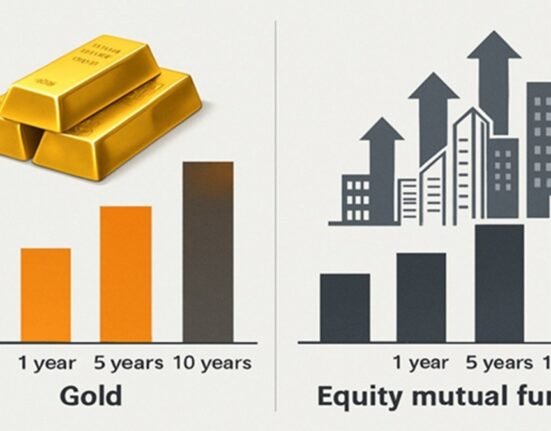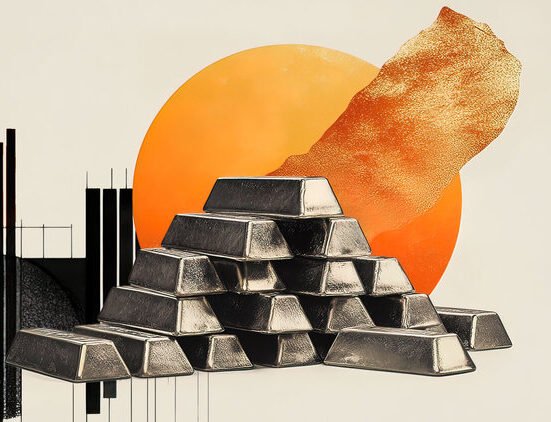
For centuries, gold jewellery has been a symbol of prosperity, tradition, and familial legacy across Indian households.
India’s deep-rooted cultural affinity for gold is globally recognised. For centuries, gold jewellery has been a symbol of prosperity, tradition, and familial legacy across Indian households. However, in recent years, we are witnessing a discernible shift: the conventional demand for physical gold, particularly jewellery, is experiencing a slowdown, while interest in digital investment tools like Gold Exchange-Traded Funds (ETFs) is gaining consistent traction. As both Vice President of the India Bullion & Jewellers Association (IBJA) and Chairperson of Aspect Global Ventures, I view this shift not as a decline in interest for gold, but rather a transformation in how Indians choose to engage with it.
Changing economic realities and consumer preferences
There are several converging factors behind this transformation. Firstly, the price of gold has steadily risen over the past few years. As of May 2025, gold continues to hover at premium levels — ₹9,700 per gram for 24K gold — making substantial jewellery purchases less viable for the average consumer. Jewellery, while valuable, comes with additional costs such as making charges, taxes, and in some cases, design depreciation — all of which reduce its resale value and appeal as an investment.
In a male-dominated environment, it is extremely risky to wear expensive jewellery and, for security reasons, as the gold price increases, their male counterparts won’t allow women to wear jewellery and go out for day-to-day household needs, or even for parties, festivals, or birthdays.
In contrast, Gold ETFs provide price transparency, liquidity, and convenience without the physical limitations of storage or purity concerns. Investors, particularly younger generations, are beginning to realise that gold can offer security and value appreciation without necessarily being worn.
The rise of financial literacy and digital platforms
One of the more encouraging reasons for this shift is the rise in financial literacy and digital awareness across India. Today’s investors are more informed and cautious. With the growth of fintech platforms, it is now easier than ever to invest in gold digitally — in denominations as low as ₹100. Gold ETFs and sovereign gold bonds offer not only convenience and low entry barriers but also eliminate concerns around theft, insurance, or wear and tear.
This movement is also supported by the Indian government’s push toward formalised investment instruments. Tax advantages, regulatory backing, and consistent market performance have helped improve the credibility and adoption of Gold ETFs among both retail and institutional investors.
Lifestyle evolution and urban behaviour
Urban India is also experiencing a lifestyle evolution. A growing segment of middle- and upper-middle-class Indians are choosing experiences, education, and investments over tangible luxury purchases. Weddings are becoming more minimalistic, and consumers are more conscious of value than ever before.
Young women, traditionally the largest demographic for jewellery consumption, are redefining their relationship with gold. While they still appreciate the aesthetic value of ornaments, their buying behaviour has become more pragmatic. Many now prefer lightweight or multi-use designs or are choosing to invest in gold digitally and use the returns to fund travel, education, or entrepreneurship.
In a nutshell, it can be said that as the gold price increases, the shift of gold is from women to men — i.e., from jewellery to ETF.
The commercial angle: What it means for the jewellery industry
From an industry perspective, this shift is both a challenge and an opportunity. As Vice President of IBJA, I believe jewellers must adapt by rethinking product strategies and customer engagement. There is already a visible trend of jewellers introducing “investment-grade” lightweight jewellery, offering greater resale value and transparency.
Additionally, we are seeing increased convergence between the physical and digital. Many jewellers have launched their own digital gold platforms, allowing customers to convert digital holdings into jewellery when desired. This hybrid model is expected to gain momentum as it merges tradition with technology.
At Aspect Global Ventures, we are actively exploring investments in digital bullion platforms and gold-backed fintech ventures that bridge the gap between physical and digital ecosystems. This allows traditional value systems to coexist with modern financial behaviour, preserving gold’s cultural essence while adapting to the economy’s digital pulse.
The road ahead: Harmonising tradition and innovation
This evolution in gold consumption patterns should not be seen as a threat to the jewellery industry but rather as a signal for innovation. As India continues its journey toward becoming a $5 trillion economy, the way we perceive and participate in gold markets must evolve. The bullion ecosystem needs to embrace technology, transparency, and customer-centricity to stay relevant.
Whether through a gold bangle passed down generations or an ETF held in a smartphone app, gold continues to hold emotional and economic value for Indian households. What’s changing is the form, not the faith. As stakeholders, we must ensure that gold — in whatever form it is consumed — continues to empower, protect, and enrich.
The author is Vice President, India Bullion and Jewellers Association (IBJA) & Executive Chairperson, Aspect Global Ventures
Published on June 8, 2025






